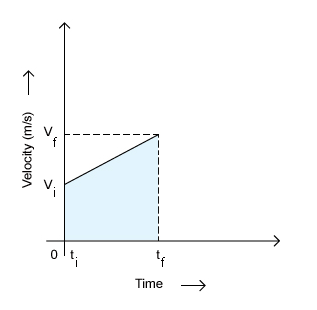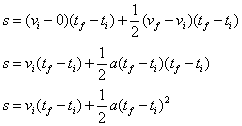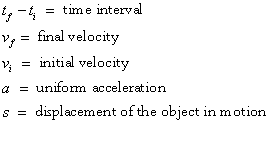Equations of Motion
A freely falling object has zero velocity initially. How can its velocity be found after a certain time? To answer such questions/problems, one has to visualize the motion in a mathematical point of view.
Consider an object moving under constant acceleration, a, and its velocity changes from vi to vf.
We know, a = 
Simplifying this equation, we get,
 -------------- I
-------------- I
Another equation of motion can be derived by using the following velocity-time graph of constant acceleration.

Area = area of a rectangle + area of a triangle
 ----------II
----------II
Similarly, the third equation of motion can also be derived.
The third equation of motion is,
 ---------------- (III)
---------------- (III)
We call these as kinematics equations in physics.
In all these kinematics equations,
